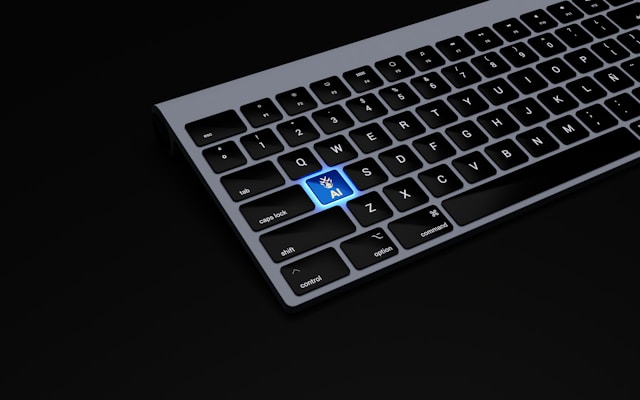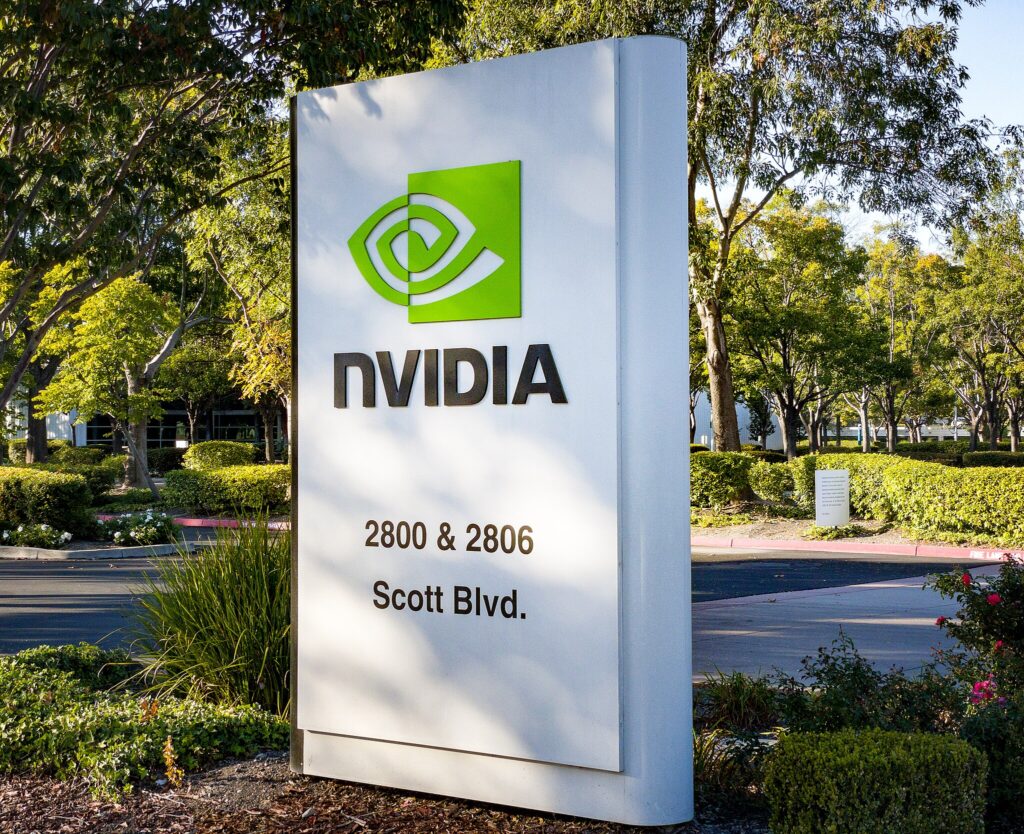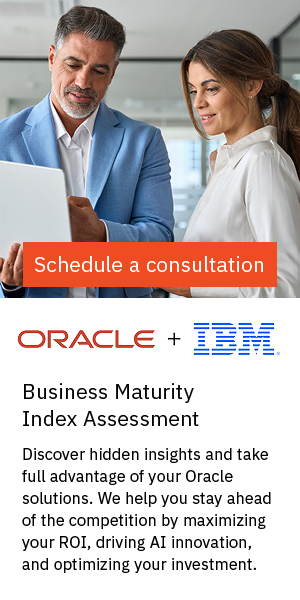Stephanie Ball speaks to IBM’s global head of SAP, Mike Perera, as he shares the wins and next step wonderings of an over 50-year-strong partnership, with cloud migration and emerging GenAI and Quantum technologies high on the roster.
As the original ERP software vendor, it’s easy to think of SAP as the founding parent of the industry – bringing the first ever ERP system, R/1, to life and success from Germany back in the 1970’s. But this goliath actually stemmed from another, even older American firm, and by this point, most of us know the story: SAP’s five founding engineers, Hasso Plattner, Klaus Tschira, Claus Wellenreuther, Dietmar Hopp and Hans-Werner Hector, all turned entrepreneur directly from engineer roles at this daddy of tech firms – you guessed it – IBM (Big Blue).
One of the oldest and largest technology companies, IBM holds a rich history of hardware, software, consulting and services innovation since its humble beginnings over a century ago.
Ever since, the firm has been focused on bringing new frontiers to the technology world as well as to the businesses building wins with its upshots. Its partnership with SAP began around infrastructure, with IBM Power Systems offered as a scale-up platform for SAP for running large SAP workloads. Today, S/4HANA in particular can still be built on top of IBM Power Systems hardware among other x86 server providers such as Dell, HPE and Lenovo. Over time, IBM has also dabbled in more software pursuits, with, for instance, IBM’s data management products, IBM DB2, offered as a supported database across ECC and R/3 and S/4HANA, and integrating with Datasphere and the rest of the SAP portfolio. Now also, IBM’s FinOps platform app integrates with SAP too.
From assisting in rising to cloud, to developing solutions around exciting emerging technologies like GenAI and Quantum capabilities, IBM has sought to stay in step with, and in some cases ahead of, every need of SAP users.
To hear about the latest thinking, collaboration and technological innovations developing in this over 50-year-long, platinum-level partnership, we check in with Mike Perera, global managing director of SAP at IBM, as he passes his first anniversary in the role.
Big opportunity ahead for SAP and Big Blue?
Having started his career as an ERP consultant 25 years ago, in many ways, Perera sees his latest IBM role as “coming full circle”.
 “For me, what drew me to IBM originally was the opportunity to do a lot of different things for one company, I have a fairly healthy attention deficit disorder, so being able to jump into different things both functionally as well as technology-wise.”
“For me, what drew me to IBM originally was the opportunity to do a lot of different things for one company, I have a fairly healthy attention deficit disorder, so being able to jump into different things both functionally as well as technology-wise.”
Now heading IBM’s global consulting service around SAP technologies, across its 38,000 certified SAP consultants, and to date over 7500 implementations in 80 countries, Perera has already witnessed a few SAP transformations since taking the reins. Now, he’s keen to make the most of the “big opportunity” in the partnership’s future when it comes to helping end users.
“We’re really the only company that is coming at this from a strong technology partnership and services capabilities in order to bring those two [consulting and services] together, all around, inside and surrounding SAP,” he says.
“Where we are now, I would say, is lightyears ahead of where we’ve been […] 50-60 years ago when we started. The reason I’m in this spot is because the opportunity to take what’s already been a great partnership and take it to a whole other level is really that big – from a consulting services perspective, from a technology perspective,” continues Perera. “How we work better together is what motivates me. Every day is taking two historic technology companies that have made markets respectively and asking how we can bring those together to do the same jointly.”
It’s AI for implementation
As a platinum partner for RISE with SAP transformations to the cloud for the last few years, and with Red Hat selected by SAP as a preferred RISE operating system, Perera sees IBM playing a large role in assisting businesses in this shift ongoing. He also teases that this migration or any system update is about to become even easier with IBM and SAP’s collaborative and ongoing use of AI technology.
Though the adoption of SAP AI tools hasn’t seen a huge uptake yet across end user cases, the strength coming now, as Perera shares, is through consultants like IBM actively using AI in all SAP customer engagements.
Last year, IBM announced Project Minerva, an open source toolkit that uses AI and machine learning to refactor old software systems and minimize the amount of rewritten code, and therein, reducing the number of breaks and errors that could appear in the migration process.
For Perera, his key learnings from the consultancy front lines, and additionally from a recent AI-themed SAP client gathering, see customers making the transition to cloud a prime use case, and therein assisting in the specific ECC to S/4HANA dilemma.
“Today and obviously going forward, we use GenAI in every single one of our consulting engagements, and certainly it’s early but we’ve already seen anecdotes where it makes us more effective and efficient, and in turn, we can help accelerate the migrations to RISE in our engagements with clients.
“We hosted a little over 40 clients jointly with SAP, and there was a mix of customers. What came out of there for us, which is more reinforcement of what we’ve seen rather than anything earth-shattering is; number one – All those companies are at different points. There’s a huge variety of complexity depending on those clients. How many instances are they running, how many lines of business do they have, how many countries are they running in, that seems to have an exponential effect on complexity for sure.”
The event seemed a good representation of the wider SAP user journey to cloud. While some attendees were already on RISE with SAP, or were even RISE customers running on IBM Cloud, some customers were taking a brownfield approach, lifting and shifting current systems into RISE, acting as quickly as possible, before going back to the business transformation side later. Meanwhile, others were undergoing a business transformation at the same time as they moved to RISE, and then, a fair number of those clients are still running ECC or even S/4HANA on-prem and are sitting in the planning stages of the move.
As companies’ journeys are all looking very different, for Perera, the benefit here applies as AI and machine learning can help to keep the dots connected for each customer on their transition journey.
“I think there’s a huge opportunity out there that we see with clients as we engage on a regular basis to bring together what you can do around transformation, SAP and the move to RISE with the capabilities that GenAI which up until now were semi-independent. When you merge the two, that’s when magic will really happen. Some of it out of the box from SAP, some of it as part of your transformation journey, some of it as part of just how you fundamentally do business differently as you go forward.
For us, from an implementation perspective, we take our 38,000 SAP consultants, we then take our 19,000 Watson X credential consultants and bringing those together, we’re bringing forth what we believe is a differentiated value proposition to our clients.”
A far-off Joule
In terms of businesses using GenAI on their own front end use cases, Perera admits we are still in very early days, with IBM being one of the SAP partners currently offering solutions in this area, along with the likes of AWS, Microsoft, Google Cloud, Cohere, Hugging Face, and so on.
Perera shares that almost no clients are applying GenAI with SAP for business purposes in a production way and, with a finger to the wind, estimates the low double-digits for those undergoing experimental GenAI today.
As of last year, IBM’s Watson AI assistant has been embedded within SAP Start, using natural language capabilities and predictive insights to boost user productivity. Moreover, IBM assists with the SAP Copilot – Joule, boosting its “interactive capabilities of asking and needing”, as well as with SAP’s GenAI Hub and assisting with the implementation of out-of-the-box GenAI capabilities.
For the AI Hub in particular, Perera is keen the quell outrage over SAP’s limit on AI updates to its cloud customers only (with that daunting 30 percent uplift in costs), saying that SAP’s GenAI Hub enables the emerging technology to be more freely applied, in line with IBM’s support for an open ecosystem.
Perera protests the point, saying: “Putting on my SAP hat for a moment – there’s nothing technically that ties GenAI directly to RISE, so you could actually apply that GenAI Hub if you so choose and if you wanted that AI-as-a-service platform so to speak, you could apply that back to ECC or you could apply that back to S/4HANA on-premise, and then carry forward that investment with you as you move to RISE, in a way that you’re not changing the environment. In many ways, it’s no different than if you go pick your GenAI platform with WatsonX and apply it today directly to ECC or S/4HANA as well.”
The holdup when it comes to actually implementing GenAI solutions, Perera states, is the separate onuses placed on businesses’ core implementation items and newer, emerging technologies.
“As it relates to GenAI, […] many clients, if not most, are really looking at how do they get the transformation done first, and then GenAI comes second,” says Perera. “The other observation is in most of those cases, the team responsible for SAP is that transformation-centric focus team, and then someone else in that company is responsible for GenAI prototyping, applying the resources, bringing the subject matter expertise to the business scenario use case. Maybe that’s on top of SAP, with SAP, or maybe it’s orthogonal to SAP altogether.
“I think my observation based on that is, I think there’s a huge opportunity out there that we see with clients as we engage on a regular basis to bring the two together and bring what you can do around transformation, SAP and the move to RISE with the capabilities that GenAI which up until now were semi-independent,” Perera continues. “When you merge the two, that’s when magic will really happen. Some of it out of the box from SAP, some of it as part of your transformation journey, some of it as part of just how you fundamentally do business differently as you go forward.”
Is SAP and IBM Quantum a leap?
Ever seeking to be at the forefront of emerging technology, it wouldn’t be a discussion with IBM without mentioning quantum. At a quantum summit late last year, SAP and IBM teamed up to present their collaborative work to date: integrating classical and quantum computing in the context of SAP.
“That use case was specifically around truck loading optimization,” Perera explains to ERP Today, and shares that, today, “we’ve got more that we’re working on together.”
For the truck loading optimization, Perera retells of the perhaps thousands of different scenarios where companies’ success depends on reacting quickly to factors like the weather, whether a truck is broken or it’s still in service, temperature controls outside of the environment and inside the truck, last minute orders, getting supplies to a distribution center – all which may or may not have happened according to plan.
“All of those inputs and a lot more are dynamic on a daily, if not on an hourly, basis, and even less,” says Perera. “With classical computing, you’ve got no way, given the number of variables you’ve got there, to calculate that in a [fast enough] period of time, before that optimization is stale or no longer relevant. With quantum, on the other hand, you will.”
Perera, as is the rest of the IBM clan, is confident in the commercial viability of quantum for 2030.
“For me, it’s not a question of if it’s a question of when, without a shadow of a doubt, I think we have played a very visible role in the market of not just saying it but doing it and sticking with that roadmap. So far, we’re perfect, knock-on-wood, on the deliveries that we’ve laid out over a multi-year period. And we’re the only company that has been able to demonstrate at the scale and emphasize what we’ve been able to do so far.”
The SAP consulting head notes that the unique aspect of IBM’s quantum partnership with SAP is currently on the business application side, not just about building an application on top of quantum but integrating quantum with classical computing and applications.
“The value of what we’re doing together right now, in the context of SAP Business applications, is finding what those interactions look like back and forth between the traditional application and the optimization that’s being done in quantum: The API calls back and forth, all the non-functional things and the IT systems overall, how those handoffs happen – on top of then solving the business problem. As technology continues to mature, we continue to take bigger and bigger business problems that we can apply and be ready to bring them to our joint clients as quickly as possible.”
IBM Consulting: Servicing the best SAP outcomes
Keen as ever to find the low-hanging fruits of these claims for end users, ERP Today presses for the target industries IBM is looking at with SAP for these emerging technologies.
Perera shares: “So right now we’re working pretty tightly together. From an industry and a market perspective, as it relates to quantum specifically, right now, we’re treating this as a little bit more of a black box that SAP would ultimately bring to clients.
“[In general], there is an interesting intersection in clients that we traditionally have strengthened industries for: financial services, government, retail, consumer packaged goods, that you match and merge with SAP and you see a lot of the same industries.
Each technology has a different use case because obviously, not all AI is ready for quantum and quantum is applicable for AI. But, in each of those industries, you’ve got challenges that you cannot meet with classical computing in the case of quantum or you’ve got the opportunity to transform business in a way that you haven’t been able to up until now with GenAI.”
In the case of this long and steady partnership, it looks likely that opportunity will continue to grow and rise with SAP and IBM, with a promise of more innovations for users to come in the near future. What’s becoming ever clearer in the meantime is that, despite the benefits for the taking, emerging technologies will simply not get as much traction as the initial hype intends, with the majority of businesses sensibly opting for a slower route to innovation. There is no doubt, however, that when SAP users’ roadmaps do actually reach the pressing business need for these technologies, it’s partners like IBM that will have built the knowledge and maturity around implementing them.






